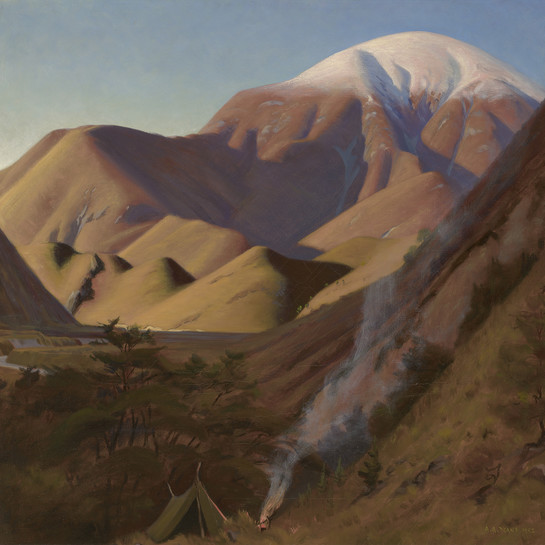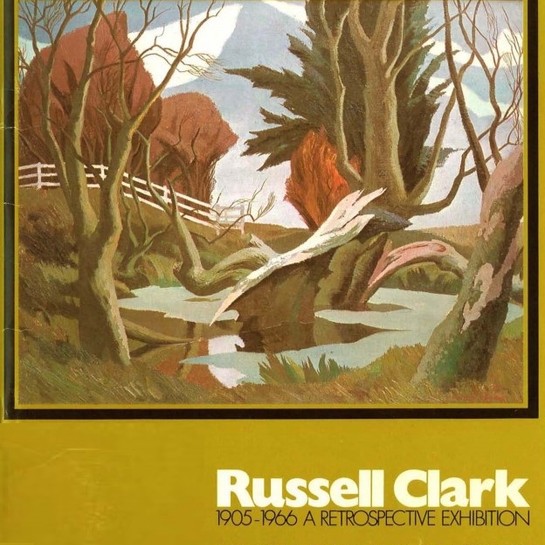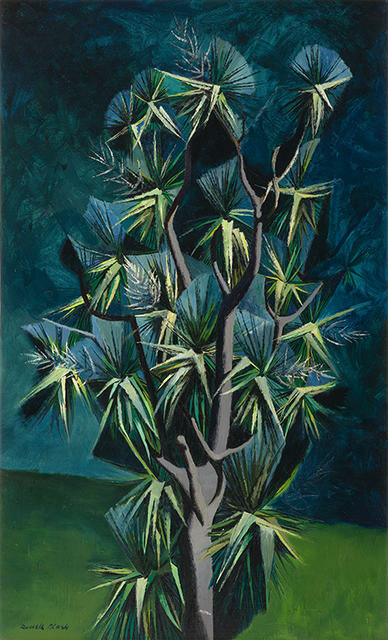Russell Clark
Aotearoa New Zealand, b.1905, d.1966
Cabbage Tree in Flower
- c. 1954
- Oil on canvas
- Purchased, 1964
- 1264 x 765mm
- 69/148
Tags: blue (color), green (color), trees
Tī kōuka, or cabbage trees, grow throughout New Zealand in a range of habitats from coastal areas through to inland foothills and some varieties can grow up to 20 metres high. They were a significant food source for early Māori and also provided fibre that was prized for its strength. The trunk of the tree is fire resistant, and it was often used by early settlers to line their chimneys.
Russell Clark began a series of cabbage tree paintings in 1953, enjoying their satisfying shape. “They are good paintable objects” he said. Here, he has used a modified cubist style, with concern for the geometric qualities of the tree, particularly its sword-like, angular leaves. He has kept to a very limited palette, with only three or four distinct colours.
Born in Christchurch, Clark moved to Dunedin in 1929 where he worked as a commercial artist for the publishing firm John McIndoe. He went to Wellington in 1938 and worked as an illustrator for the New Zealand Listener and the School Publications Unit. He was an Official War Artist during World War II and served in the Pacific. He returned to Wellington, but in 1947 moved to Christchurch where he joined the staff of the School of Art at the University of Canterbury. As senior lecturer in painting, Clark became an important influence on a generation of Canterbury artists.
(Turn, Turn, Turn: A Year in Art, 27 July 2019 – 8 March 2020)
Exhibition History
The cabbage tree is a distinctive New Zealand subject and this painting belongs to a series on these trees that Russell Clark began in 1953. He commented that he found cabbage tree shapes satisfying. “They are good paintable objects.” Clark has used a modified cubist style, with concern for the geometric qualities of the cabbage tree, particularly its angular leaves. He has kept to a very limited palette, using basically only three or four distinct colours.
Clark was born in Christchurch. In 1929 he moved to Dunedin where he worked as a commercial artist for the publishing firm John McIndoe. He went to Wellington in 1938 and worked as an illustrator for the New Zealand Listener. Clark was Official War Artist during World War II and served in the Pacific. He returned to Wellington, but in 1947 moved to Christchurch where he joined the staff of the School of Art. As senior lecturer in painting Clark became an important influence on a generation of Canterbury artists.




